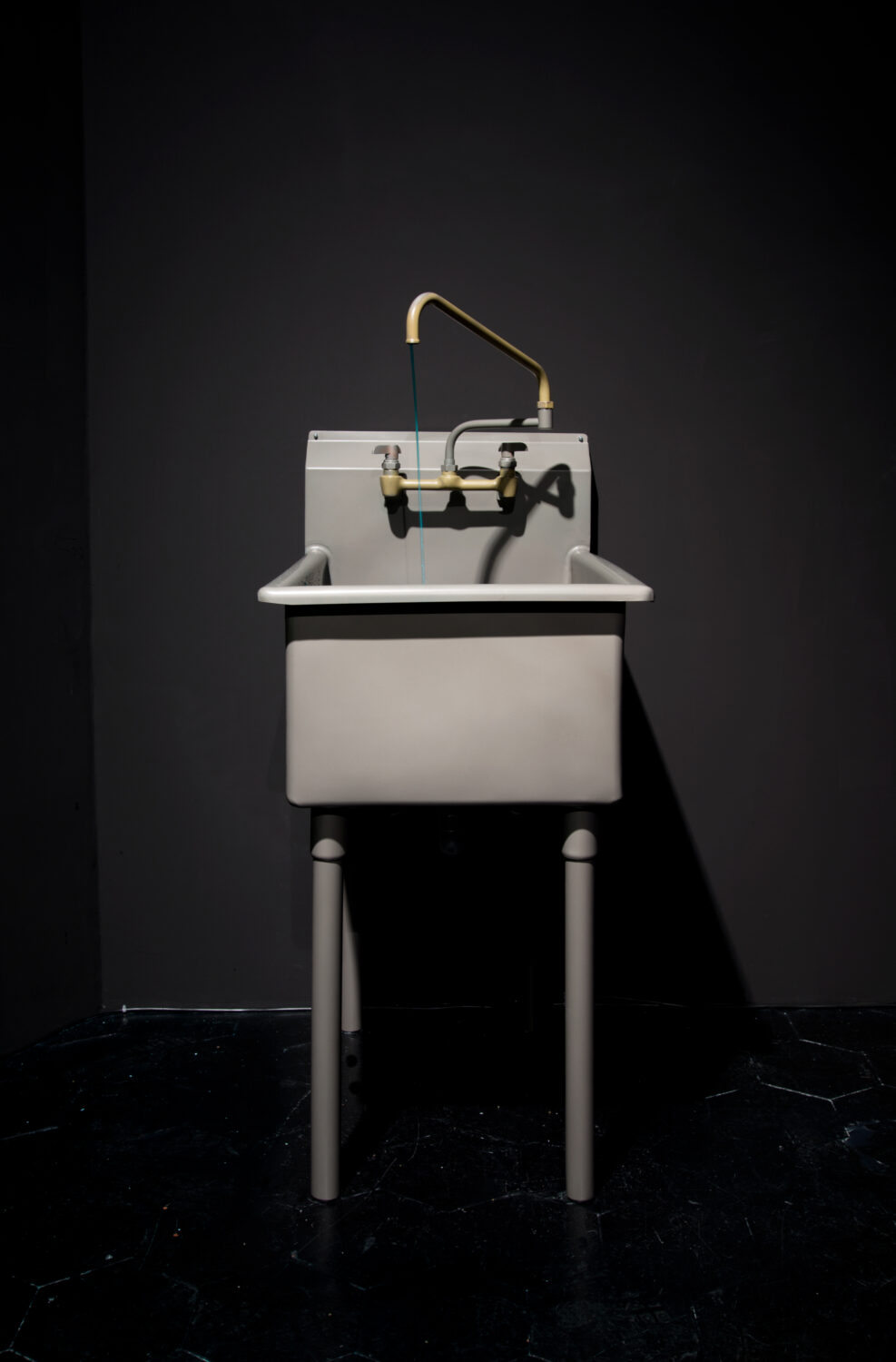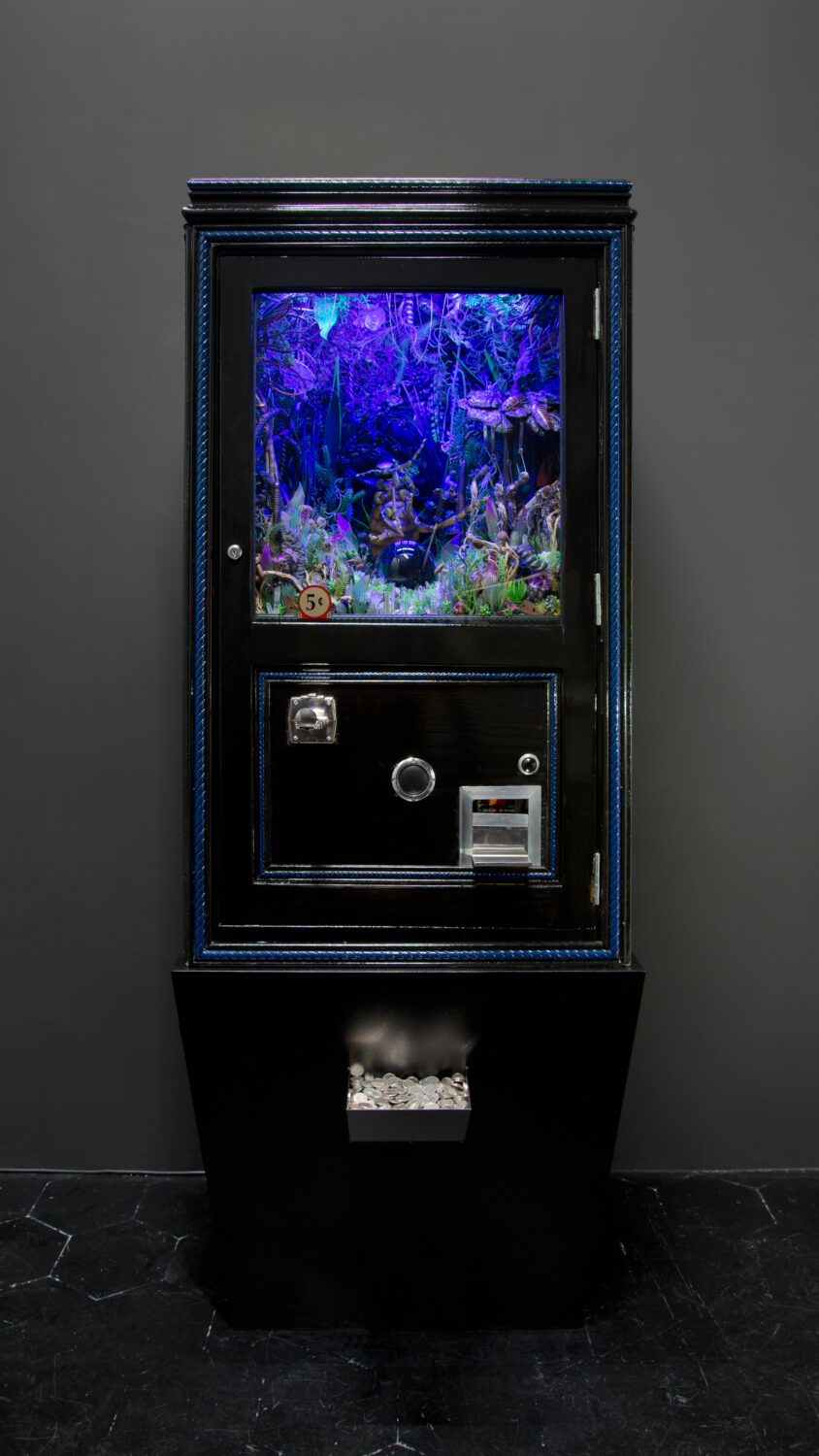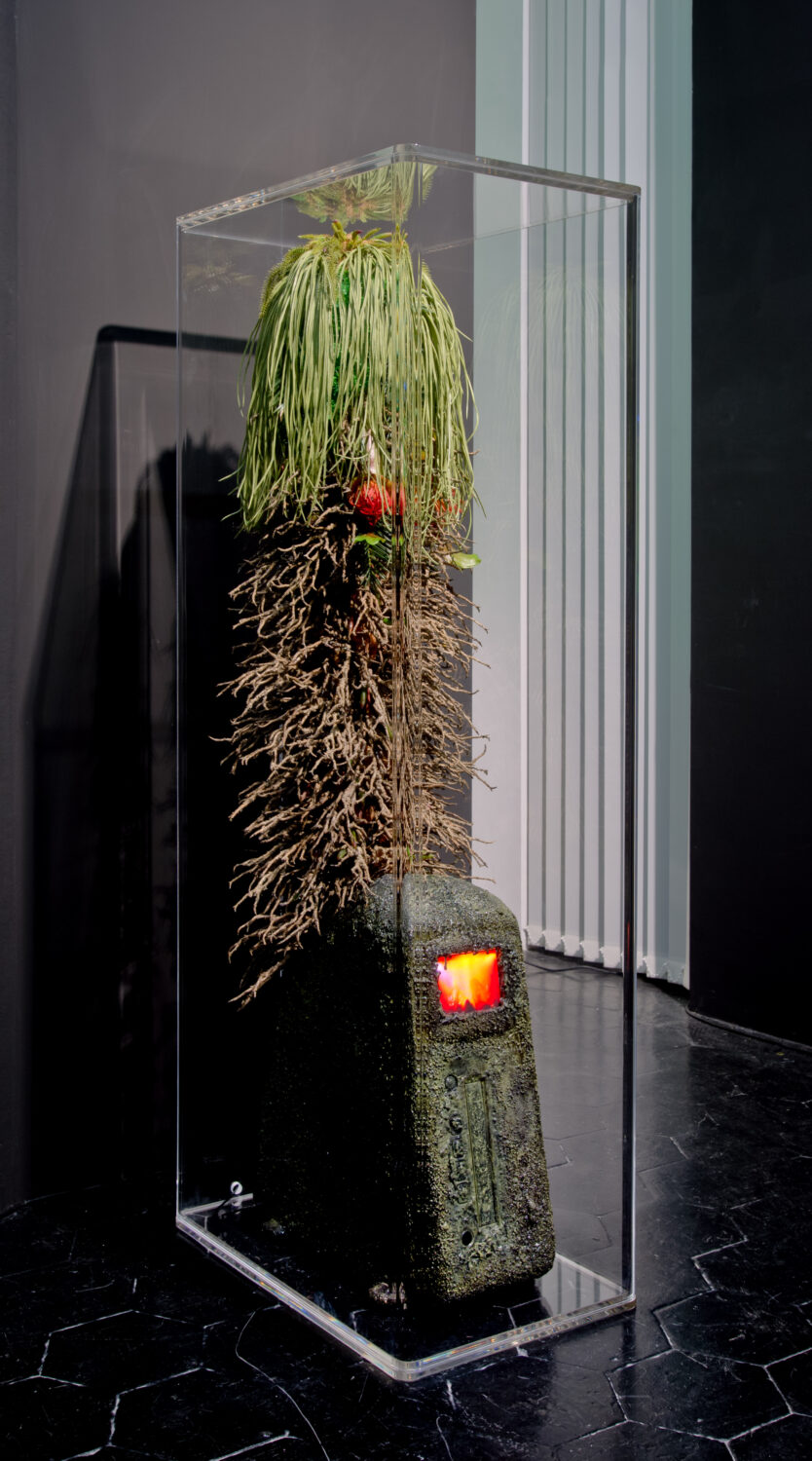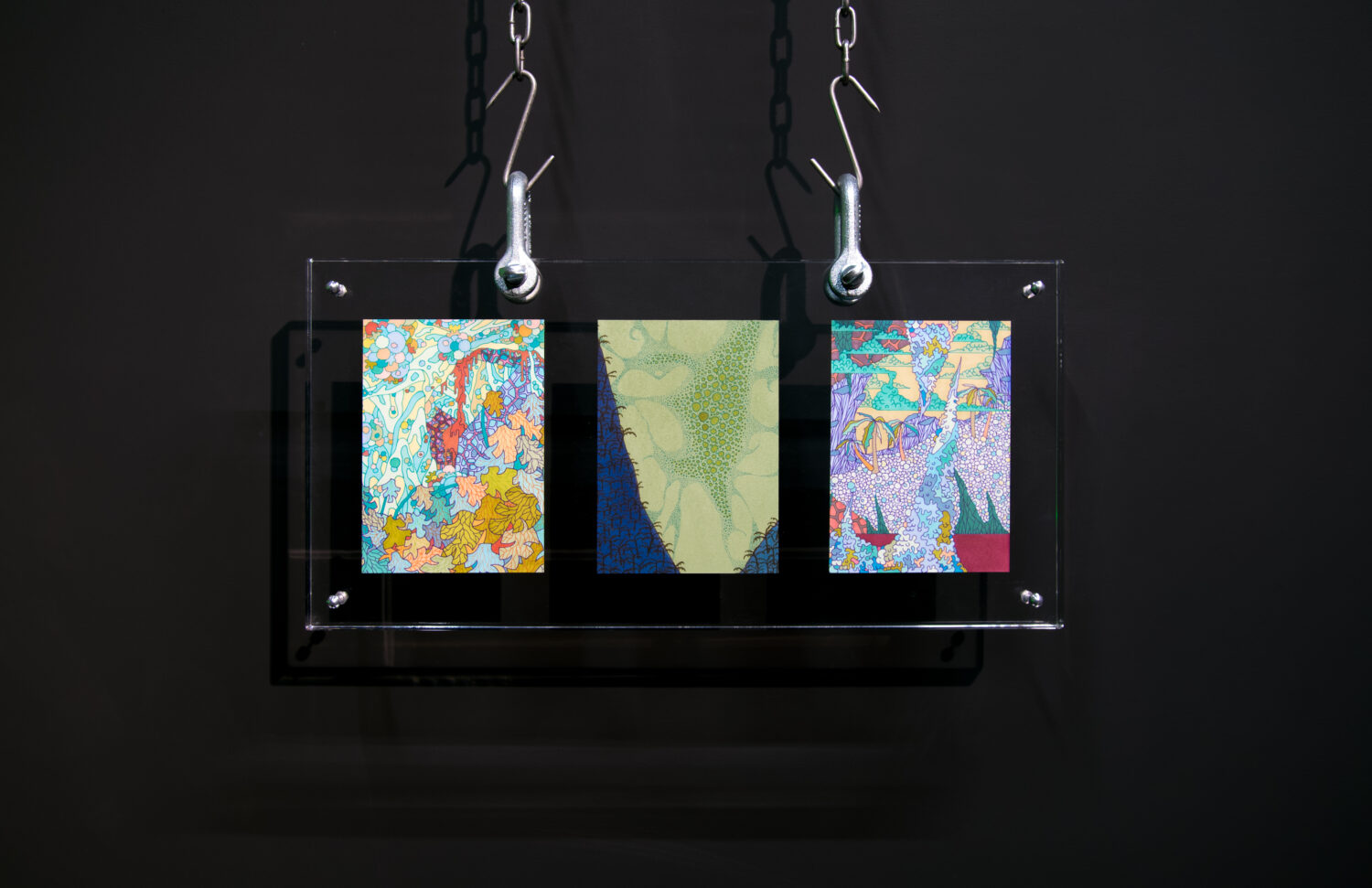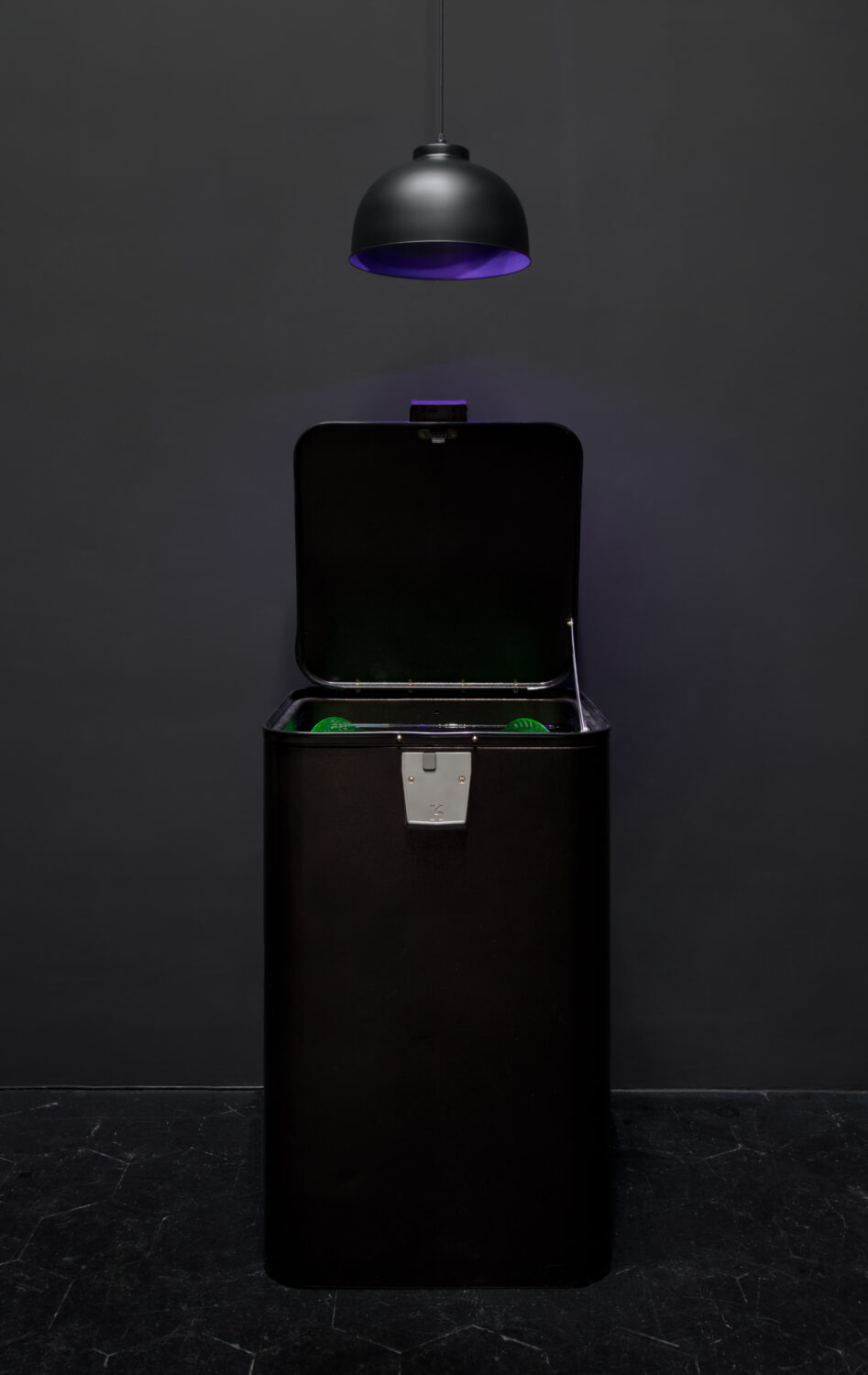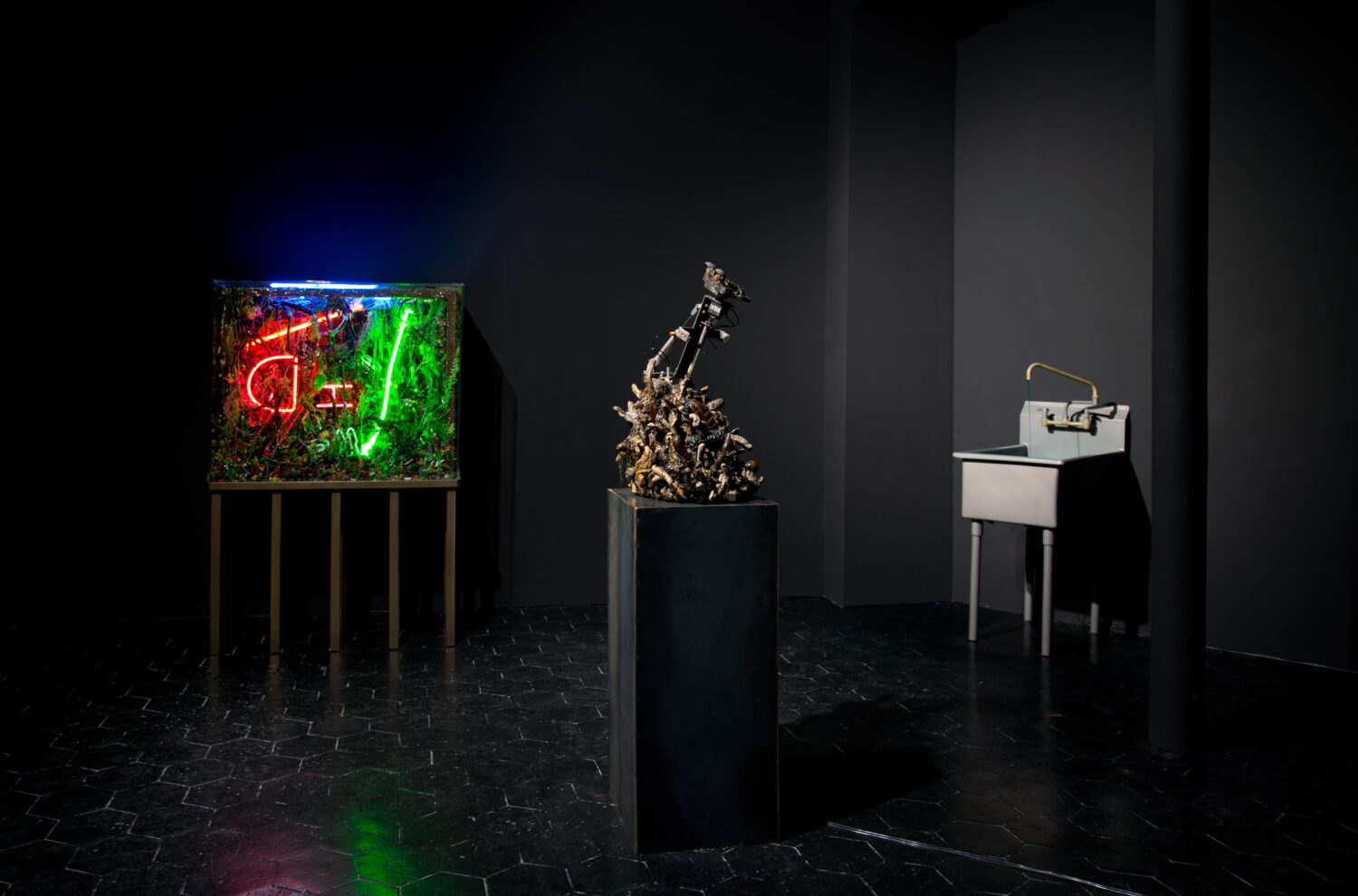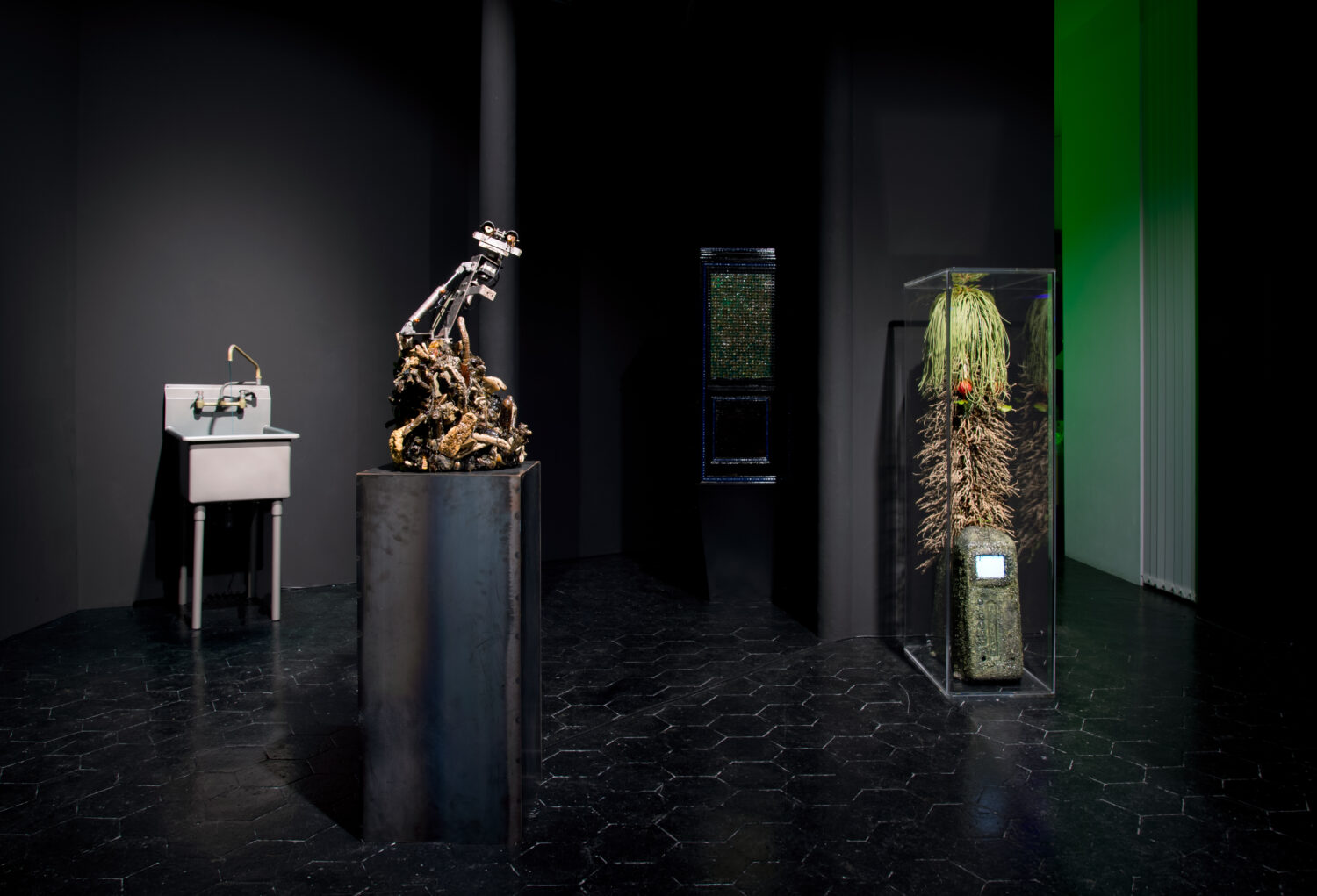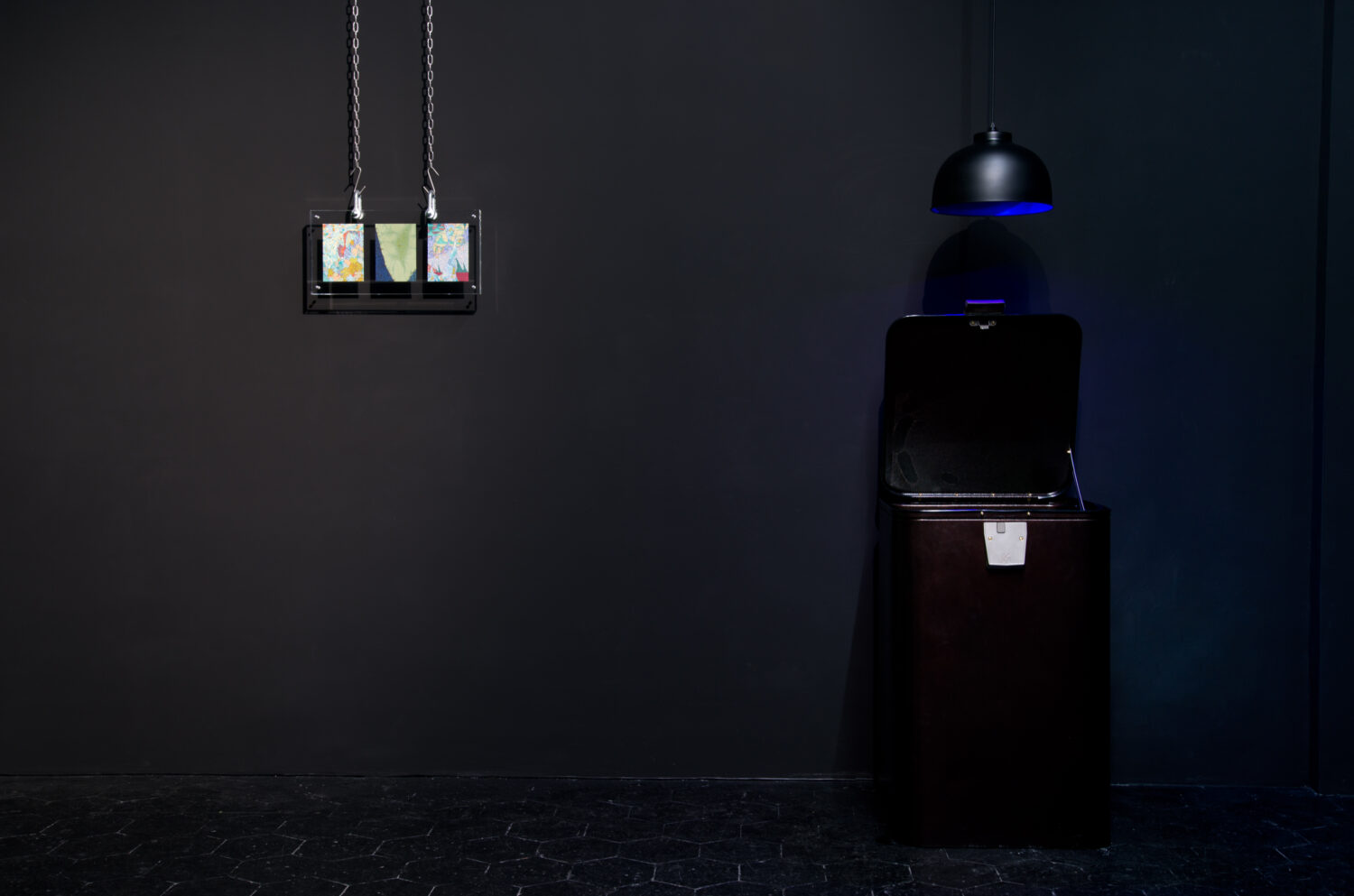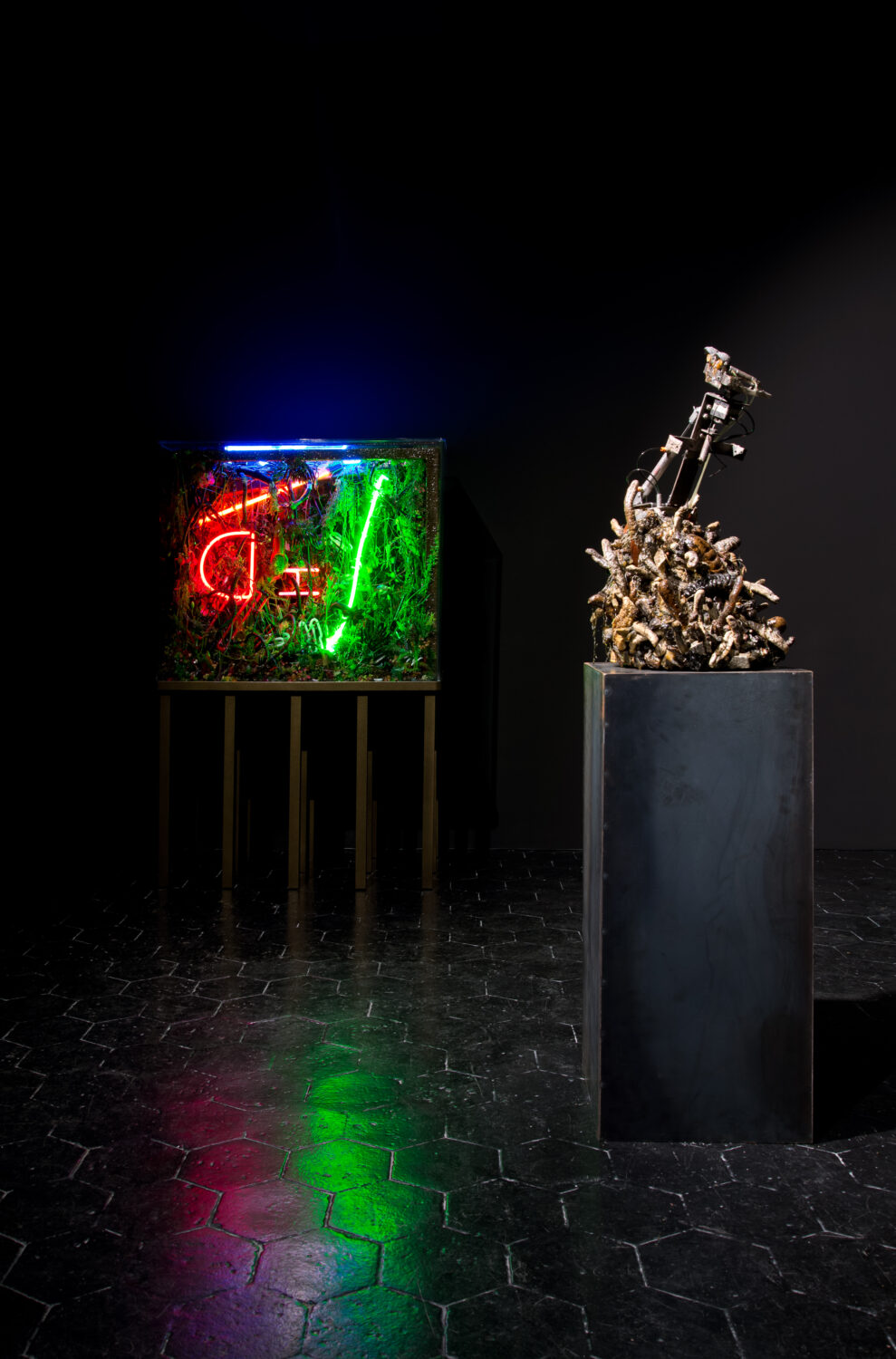

Past
Max Hooper Schneider
Nature Theater of Violent Succession
22 Oct - 28 Nov, 2015. Paris
Exhibition details:
Max Hooper Schneider
Nature Theater of Violent Succession
Oct 22 – Nov 28, 2015
Gallery:
17, rue des Panoyaux
75020 Paris
Image:
The Extinction of Neon 2, 2015
Acrylic terrarium, modeled landscape, used and broken neon signs, plastic flora, gallows structure, automotive detritus, steel chains, GTO wires, found objects, insect and animal matter, polymer resin, custom aluminum stand
167.6 x 106.7 x 61 cm / 66 x 42 x 24 in
Is it the catastrophic or apocalyptic end of things? No. Death opens. Abandonment harbors. Breakdown enriches complexity. Violence becomes generative. There is no moral to the story. Unless you are a human, the violence of succession is neither dystopic nor utopic—it just is.
In his current exhibit, Nature Theater of Violent Succession, Max Hooper Schneider develops and explores the aesthetics of succession through the creation and presentation of Trans-Habitats, worlds that materialize and dramatize in diverse ways nature conceived in a specifically Spinozan mode—i.e., as a process of ceaseless morphogenic modulation, a relentless onslaught in which bodies, as formed matters, are continuously created, transformed, and destroyed. Neither the artist nor the produced works are understood as existing outside or apart from these processes. Both are modes of nature naturing or natura naturans. The Trans-Habitats are not attempts to ‘represent’ or ‘model’ nature; they are nature. There is no artifice. Everything, including the gallery, is a Trans-Habitat. Nothing escapes. Nature is exactly what exists.
There is that which is scavenged and ushered toward an imagined climax of form as in “The Discovery of VHS,” where an unclassifiable tree with an externalized rhizosphere sprouts from a resin-slicked, VHS stump removed from an abandoned 18-wheeler truck and playing the grainy blossom of a lost concert video; or “The Extinction of Neon 2,” a cross section of used and forgotten fragments of neon signs which say nothing gathered from the waning retail environs of inner Los Angeles and dioramically displayed as a Pronk-like scene in the fecund bowel of a tropical junkyard as something on the verge of extinction under the photic regime of the LED—or perhaps just shattering under the pressures of our insistence upon their signification.
There is that which has been animated (and/or reanimated) in an attempt to theatrically invert its presumed mode of representation as in “The Plaguewielder,” an over-sized anatomical model of a flea (already a minor celebrity with several incarnations—e.g., a teaching aid at an Ivy League university and the villain in a 2008 TV cell phone commercial) occupies the husk of a replicant turn-of-the-century animatronic fortune teller and pivots within a world of surgically blended organic and inorganic ingredients, all the while soliciting a 5 cent coin from the viewer in exchange for a crude ballet with a quartz ball and the dealing of a ‘fortune’ – in this case a highly suspect notion of what a plague is and can be; or “Friend (Avian Endoskeleton),” the austere presentation of a dilapidated metal bird ‘skeleton’ running on compressed air, pathetically, inconsistently, jerking to and fro and oscillating its denuded head plate as it perches atop a sewage-like swarm of marine invertebrates—the machine struggling to remember its previous life as a plush owl in a mid-70s family pizza parlor in the taiga suburbs of Canada.
And then there is that which is refurbished and presented as a stage for novel nonhuman communities and esoteric materials as in “Cold War Dishwasher (Uranium Glass),” a copper and plastic clad 1950s Kenmore vertical-load dishwasher filled with a menagerie of radioactive uranium dishware harvested from the noxious antique stores of the nuclearized American southwest and revisioned as an aquatic reef for UV-reactive genetically modified fish; or, “Sink from Foreclosed Morgue,” a utility sink acquired from a deserted morgue, chemically stripped down to it’s rotten-egg grey alloy and plumbed as a fountain to drip opaque cobalt blue water from it’s faucet hiding an unknown schooling species.
There is a sole drawing, “Landscape Triptych,” the nearly 2-D codex of all these operations, an accretion of linework, a constructed universe and it’s imagined climax, a collision of bodies and the ongoing formation of Trans-Habitats, an aesthetics of congestion and incessant correction, a pullulating specimen or prototype locked within a sandwich of acrylic and dangling on meat hooks and chains as if the information it possesses is fugitive.
In producing the Trans-Habitats Hooper Schneider’s aesthetic operation natures primarily as a violation of, and a violence done to, materials: nothing is ever left in its ‘original’ state. Force is applied: hammers, drills, blades, air compressors, flames, torque. The Trans-Habitats are not sleek or lean. They accumulate mass; they intensify; they opulate and complicate. What you see is not, absolutely not, what you get. Only a forensic geological excavation or an autopsy could make visible the multiple strata laid down in the naturing process of uprooting, breaking apart and reassembling, repurposing, resuscitating dead and discarded readymades: in sum, the obsessive-compulsive mania of layering and overlayering; of making, overmaking, and overtaking. The same procedural process of the afforestation of a parking lot over time occurs as in the enveloping hardened plastic with a mucilage of resin and rotting flora and fauna.
You will observe that the Trans-Habitats are interred within the walls of a gallery and various modes of vitrine. They appear to be stilled moments, little Pompeiis caught and memorialized in their dioramic enclosures. Are they dying or laboring to be born; are they reaching their idealized climactic perfection or are they in the process of disintegration and decay? We don’t know. The Trans-Habitats are designed to keep these questions alive and also to function strategically as focusing devices: openings that potentiate the observation of matter in a turbulent state. Like the rooms in a museum the Trans-Habitats exhibit a carefully staged dramaturgy of violent succession; like a microscope or telescope, an X-ray or MRI, like a cabinet of curiosity or secret pornographic laboratory, they make present what typically remains obscure, even hidden.
The Trans-Habitats may strike you as fantastical or unnatural, even nightmarish, but they are intended as close examinations of the quotidian real. If you have not encountered a Trans-Habitat in your neighborhood, it is not because it isn’t there. You will observe that it is ontologically impossible to still succession. The TransHabitats, despite appearances otherwise, will continuously escape their material and conceptual enclosures. Their molecules will continue to agitate, they will dilapidate, they will be crated, transported and stored, they will undergo various maintenance regimes. They will be understood differently in differing spatiotemporal conditions and they will be differently perceived and assessed. Like a word, like a painting or a truth, like a category or an ideal, the TransHabitats will make promises of capture and containment that they will never keep. They will be overtaken. They will become the playgrounds of dust, blowflies, greasy fingerprints, ants, spores and so on. They will de- and recompose. The Trans-Habitats, like Georges Bataille’s informe, are ‘base,’ perpetually performing the nature theater of dismembered and deformed materials and taxonomic mutilation. They ‘denature’ nature in disorienting ways, breeding monstrous hybrids and uncanny assemblages. They are not pretty. They may offend. But it is this same assaultive opulence, this same enactment of the terror and horror of the body-in-pieces, that in the manner of the durable human fascination with ruins and decay, with crime scenes and catastrophic accidents, gives them their allure, their power to capture and hold sensory attention—even if this attention never reaches the thinking brain but lingers on in the ‘lizard’ brain. Whether the Trans-Habitats repulse or attract, their heaving excessiveness, their baroque fecundity, their biotic horror vacui, will arouse. They will leave their traces in your synapses.
Aura returns.
[This text was composed by Barbara Hooper via a series of interviews with Max Hooper Schneider. “Nature Theater” is borrowed from Franz Kafka’s Amerika.]

